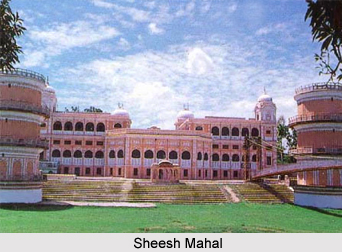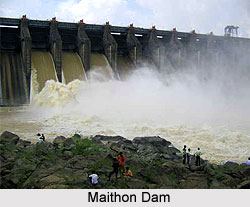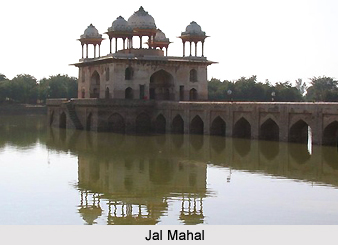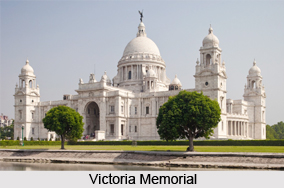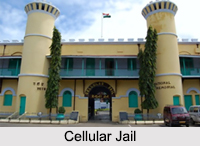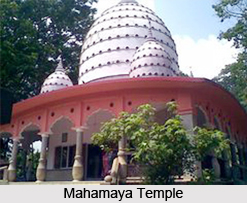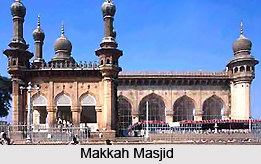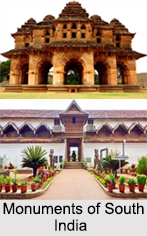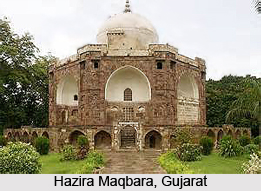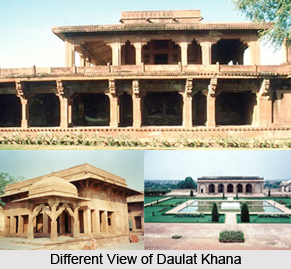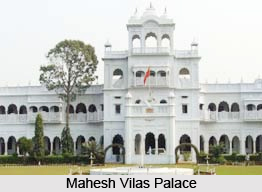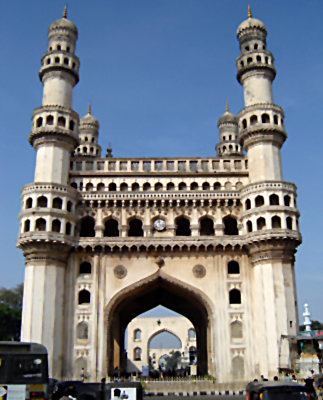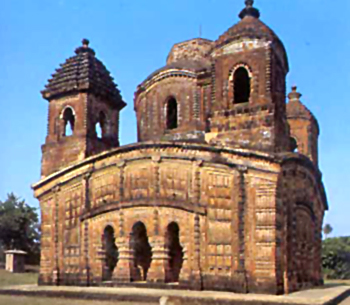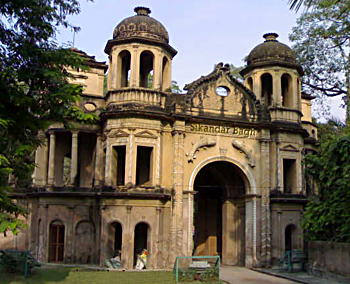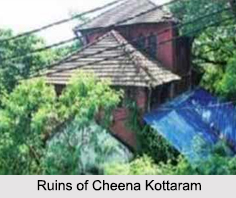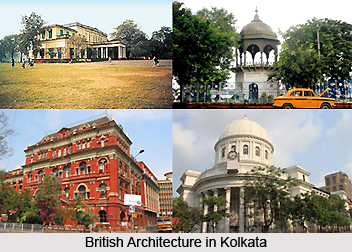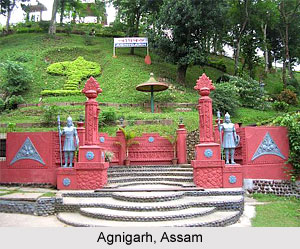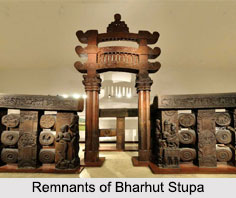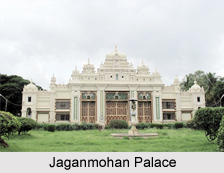 Jaganmohan Palace is an Indian regional monument located in the royal city of Mysore. This palace is one of the seven palaces of the city of Mysore. It is considered to be one of the most beautiful contributions of the Wodeyar Kings, who were the rulers of Mysore. The art gallery of Jaganmohan Palace is known to contain one of the largest collections of artefacts in South India.
Jaganmohan Palace is an Indian regional monument located in the royal city of Mysore. This palace is one of the seven palaces of the city of Mysore. It is considered to be one of the most beautiful contributions of the Wodeyar Kings, who were the rulers of Mysore. The art gallery of Jaganmohan Palace is known to contain one of the largest collections of artefacts in South India.
History of Jaganmohan Palace
Jaganmohan Palace was built by His Highness, Krishnaraja Wodeyar III in 1861. The royal family of the Wodeyars used to live in the Mysore Palace until a fire had ruined it. The erection of a new palace called the Amba Vilas Mysore Palace commenced on 1897 and ended in 1912. It was at this time that the Jaganmohan Palace was used by the royal family as their temporary home. History highlights that apart from acting as a home, the Jaganmohan Palace was utilized for conducting many ceremonies. In 1902, a ceremony was conducted in a pavilion inside the Jaganmohan Palace when the Mysore throne was passed to His Highness, Rajarshi Nalvadi Krishnaraja Wodeyar. Lord Curzon, the then Viceroy and Governor General of India was present at this ceremony. Rajarshi Nalvadi Krishnaraja conducted his daily durbar and also the special dasara durbar during the dasara period. This palace was also utilized to conduct the early convocations of the Mysore University. In July 1907, the venue chosen for the first session of the legislative council (earlier known as the Representative Council) of the Mysore State was the Jaganmohan Palace. The Prime Minister of the State (earlier known as the Diwan) headed this legislative council. It was HH Jayachamarajendra Wodeyar who converted the palace into a trust and also opened it for public visit.
Architectural Design of Jaganmohan Palace
Jaganmohan Palace represents the traditional architectural design style of the Hindus. The palace is a three storied building. This palace was also provided with an external forepart in 1900. This forepart was constructed with an auditorium behind it. There are three entrances of the forepart. The interior of the forepart is adorned by mural paintings and a canvas. The mural paintings represent the traditional style of the Mysore school of painting and the subject of these paintings is the dasara scene. Vegetable dyes were used to create the earliest known picture of the Mysore Dasara. The canvas stretches across three walls inside the forepart. Sequence of the Jumboo Savari is represented on it. A visit to this forepart will also acquaint one with the lineage of the royal family, the Wodeyars, as their family tree is also painted on a wall. The entablature of the forepart (which is defined as the upper portion of a building above the columns and below the roof) is graced by religious motifs and miniature. Dashavatara or the ten incarnations of the Hindu Lord, Vishnu is also represented inside the Jaganmohan Palace.
Art Gallery of Jaganmohan Palace
It was in 1915 that the Jaganmohan palace was converted into an art gallery. In 1955, this art gallery was renamed, the Sri Jayachamarajendra Art Gallery in the honor of Jayachamarajendra Wodeyar. This gallery is a home to a variety of objects of great antiquity. Some of the authentic ancient items preserved in this palace are sculptures, brassware, weapons of war, antique coins, musical instruments and currencies. It is important to note that vestiges in this gallery are mostly in the form of paintings. More than 2000 paintings are preserved in the art gallery. They are representative of the Mysore, Mughal and Shantiniketan styles of painting. Some of the painters whose masterpieces are displayed in this gallery are Col. Scot, Haldenkar, Rabindranath Tagore and Abanindranath Tagore, Nikolai Roerich and Svetoslav Roerich, Sharada Ukil, Ranada Ukil and Barada Ukil (also known as the Ukil brothers) and Raja Ravi Varma. Jayachamarajendra Wodeyar had donated 16 paintings of Raja Ravi Varma to the gallery. Paintings of Raja Ravi Varma, a great artist of Thiruvananthapuram are considered to be prominent among the paintings protected in the gallery. They are known to be over 100 years old. Some of these paintings are reminiscent of Hindu epics, Ramayana and Mahabharatha as scenes from these very epics are depicted on them. The collection of paintings by Col. Scot, a British Army Officer is based on wars between Tipu Sultan and the British army. War scenes captured in these paintings are considered to be the only visual representation of the wars. A painting depicting a lady with a lamp is isolated from the rest of the paintings in the gallery and is exhibited in a dark room. This arrangement was made to demonstrate an illusion that the face of the woman is lightened up by the glow of the lamp. Paintings made on a grain of rice which can be viewed only through a magnifier are also the exhibit of art gallery. Another noteworthy item of the art gallery is a French clock. This clock is uniquely designed using a parade of artificial miniature soldiers, beating drums and a bugle. The miniature soldiers denote hours of the clock, the bugle represents the minutes and the beating drums represent the seconds.
Restoration of Jaganmohan Palace and the Paintings
With the paintings finding inadequate space for their display, the necessity of expanding the Jaganmohan Palace was felt. Therefore, a new hall was erected in 2003. Poor condition of the paintings of the Jaganmohan Palace was exacerbated by dust, heat, humidity and poor lighting conditions along with unscientific stretching of the canvas on which the paintings were drawn. Also, harmful effects of water seepage on these paintings also could not go unnoticed. Painting the walls of the room in an ignorant manner where the exquisite paintings are preserved has also caused considerable damage to the paintings. These paintings used to be left uncovered making them prone to paint dripping from the walls. Restoration of these paintings thus became imperative. Thus, the Regional Conservation Laboratory (RCL) was given the responsibility of restoring the old paintings of Raja Ravi Varma, the Murals, Syrendri (which had a hole in the canvas), Victory of Meganath and the Malabar Lady. But the improper and inefficient way of restoration was evident in the paintings like the painting of Ravana slaying Jatayu by Raja Ravi Varma. One will be able to detect a difference in the colors that were used to restore the painting and the ones used in the original painting. Holes at the bottom of the painting are also quite evident, post restoration. Today, the painting of the lady holding the lamp by Haldenkar is considered to be a poor exhibit of the Jaganmohan Palace. This is because to give the effect of shade in a poorly lit room, the windows are carelessly covered with musty cloth. Poor lightening and musty cloth only help to ruin the effect.
Visiting Information
Jaganmohan Palace is located across the Sayyaji Rao Road, right behind the Mysore palace complex. This Palace is easily reachable from the Mysore City bus stand and KR Circle.
Related Articles:
Monuments of Karnataka
Mysore Palace
Badami Cave Temples
Monuments Of Bijapur
Monuments of Pattadakal
Monuments Of Mysore
Gol Gumbaz
Raichur Fort
Mirjan Fort
Gokarna Math
